How to Prevent Workplace Injuries and Improve Student Focus in 3 Easy Steps
Posted by MooreCo Inc on Apr 22, 2021 2:42:55 PM
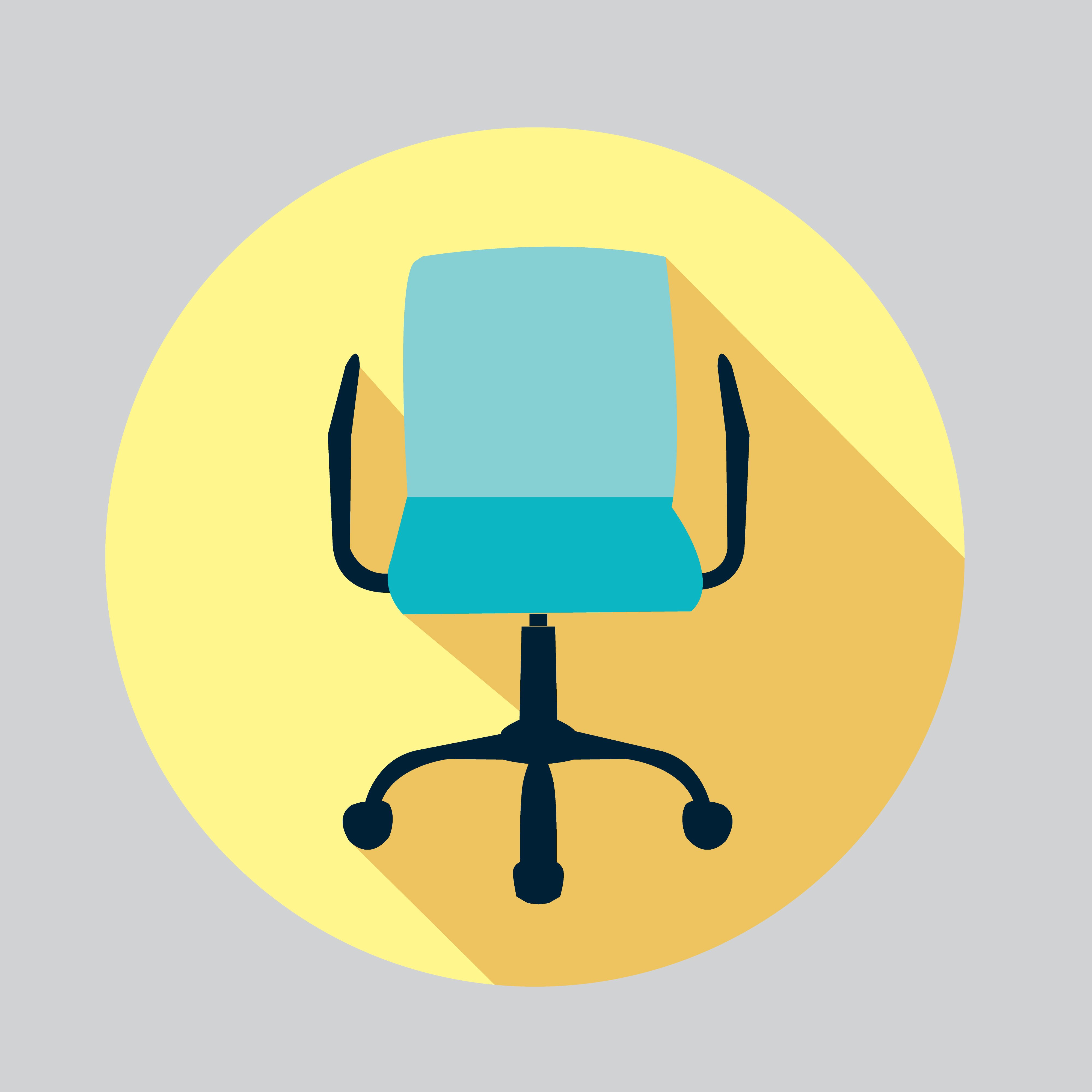
How to Prevent Workplace Injuries and Improve Student Focus in 3 Easy Steps
At MooreCo, we prioritize optimal human health and well-being as part of our research and design process. That's why we featured two specialists in anatomy and ergonomics at our recent Thrive Forward webinar. The Thrive Philosophy was created to serve as a checklist for creating environments that help students and workers thrive in every situation. Physical development is one of the 6 developmental principles we consider. Post-pandemic, it will be more important than ever to consider the physical and emotional needs for worker and students returning in person. So what do you need to know to provide environments that will prevent workplace injuries or stimulate your students for healthier productivity? Follow these three easy steps.
What is Ergonomics?
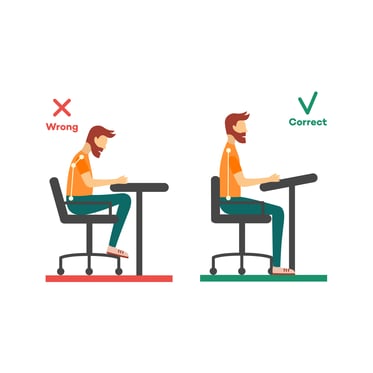 First, let's talk about the study of ergonomics and why it matters to your workers and students. According to Merriam-Webster, ergonomics is "an applied science concerned with designing and arranging things people use so that the people and things interact most efficiently and safely". The Occupation Safety and Health Administration (OSHA) says that musculoskeletal disorders can be caused by repetitive stress in a place of work and account for 33% of all work-related injuries. Although very common, MSDs are also very preventable. With proper training, ergonomic coaching, awareness, and furniture that supports optimal positioning and movement, employees and students can be kept healthier and happier, leading to increased productivity and reduced absenteeism.
First, let's talk about the study of ergonomics and why it matters to your workers and students. According to Merriam-Webster, ergonomics is "an applied science concerned with designing and arranging things people use so that the people and things interact most efficiently and safely". The Occupation Safety and Health Administration (OSHA) says that musculoskeletal disorders can be caused by repetitive stress in a place of work and account for 33% of all work-related injuries. Although very common, MSDs are also very preventable. With proper training, ergonomic coaching, awareness, and furniture that supports optimal positioning and movement, employees and students can be kept healthier and happier, leading to increased productivity and reduced absenteeism.
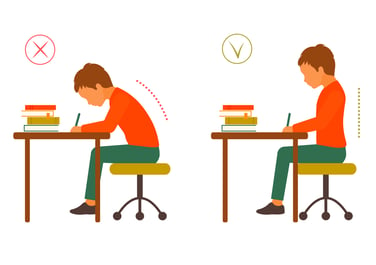
Although repetitive musculoskeletal injuries are less common in younger students, physical development for children and adolescents is still an important factor for health and optimal learning. Dr. Amy Rohsner, PT and Dr. Lisa Harris, OT are the co-owners of Healthworks Ergonomics in Austin. They spoke at MooreCo's Thrive Forward webinar last month and provided in-depth insight on how to help improve student focus by stimulating different types of learners. This can lead to improved concentration, self-esteem, and a sense of inclusion. It also helps to keep students developing well physically, keeping them moving throughout the day and establishing good habits for life.
Step 1: Provide Support
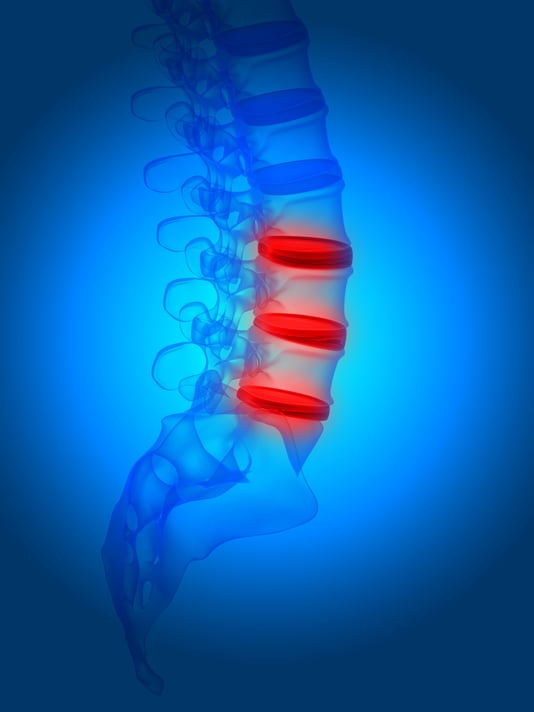
Dr. Rohsner and Dr. Harris said that a key to reducing musculoskeletal injuries is to provide adequate support for optimal spinal positioning. But what does that mean? First, it’s important to note that optimal spinal positioning is when the spine maintains its neutral position comfortably. This means that all 6 curves of the spine are intact, and the spine is neither hyperextended (back bending) or flexed (slouching). Flexing the spine for hours at a time (slouching) can create stress on the joints of the lumbar portion of the spine (the lower back) and the cervical (or neck) spine. Over time, this can lead to problems like slipped or herniated discs, sciatica, and many more painful problems. In addition, a lack of spinal support can have a negative impact on breathing properly. Breathing insufficiency can lower productivity and create heightened levels of stress, as breathing affects the nervous system and the brain's ability to function.
There are two different ways of providing spinal support. One version is external support. This means having chairs and seats that follow the curves of the spine, providing a soft, but firm, contour for the lumbar and cervical (low back and neck) to remain in neutral positions. The other version of spinal support is internal support. The body is able to naturally support the spine when muscles are able to fire and engage. The transverse abdominus is a muscle of the core that helps to support the spine in a neutral position. Certain seats (without external support) allow these muscles to fire and contract by placing the occupant upright on their ischial tuberosities (sitting bones) so that they can find and maintain their own form of optimal posture.
Both versions of support are important. For those who sit for long hours at desks, external support (like what is provided by ergonomic desk chairs) can provide what is needed. MooreCo’s Elate Task Chair was designed with a revolutionary weight adjusting system that helps to support the spine in a reclined or upright position. It also provides contouring along the lumbar portion of the spine. For internal support options, Rocking Stools and Soft Seated Pads provide students and those who like to work in flexible seating environments the ability to engage the muscles of the core and find optimal positioning through internal support.
Step 2: Allow Movement
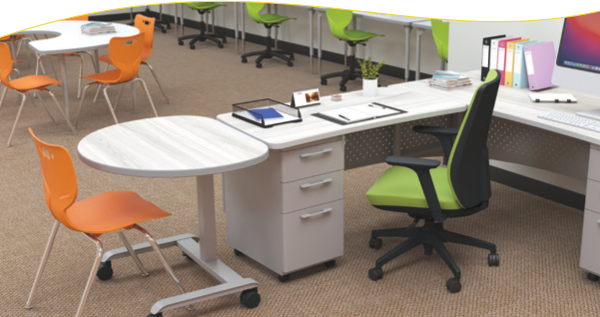
Although Dr. Rohsner and Dr. Harris emphasized the importance of seats that provide spinal support, they said this isn’t enough to reduce injuries. Often, repetitive stress can occur simply from long hours of sitting with no movement. The lack of movement can also cause joins to feel stiff, lead to a shortening of breath, and loss of circulation. According to Dr. Rohsner, “Postures are not static”. This means that movement throughout the day is optimal for reducing injuries at work. Not only will movement reduce incidents of injury, it can improve oxygen flow to the brain, aiding in concentration and productivity. For students and children, movement will help develop and maintain their physical and mental well-being. Failing to provide students with the ability to move throughout the day is counterintuitive, and may lead to loss of focus, acting out, and the forming of bad health habits for life.
Provide environments that allow movement throughout the day. For employers and educators, this may mean encouraging stretch breaks, walks, or even just a change of position for focused workers. Furnishing office spaces and classrooms with multiple options for sitting, standing, and reclining, will help aid in creating the flow of movement. Reading nooks, standing desks, rocking chairs, and soft seats that allow for reclined or prone lounging will support the body in maintaining healthy joints, muscles, breathing, and mental health.
Step 3: Create Options
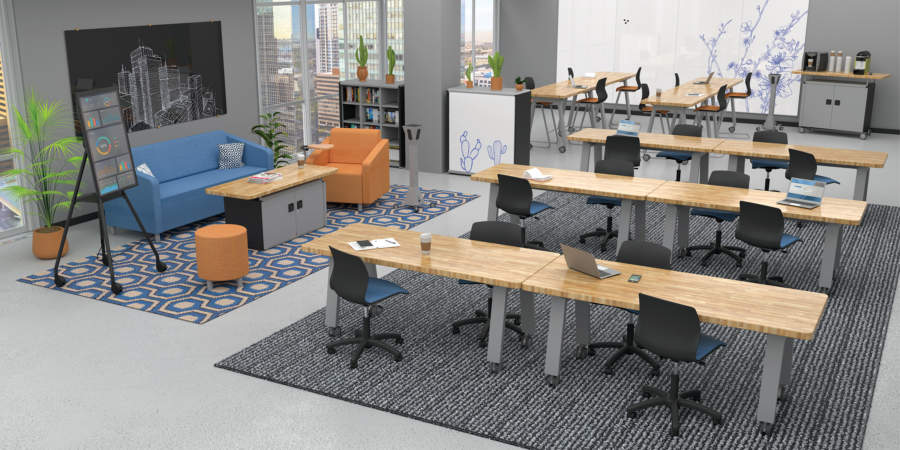
One thing that all experts agreed on at the Thrive Forward webinar was that creating optimal environments for learning is about creating CHOICES. This means choices for those with differing sensory and learning abilities, backgrounds, and physical abilities. As life resumes at a more normal pace and more students and workers return to in-person environments, it will be more important than ever to provide comfortable spaces for everyone to thrive. This means the more options provided for flexible seating, distance or hybrid learning, and interacting in groups or alone.
For those who like to work alone, privacy pods, study carrels, and all-day workstations with personalized features can provide the comfort and security of being undisturbed for sensitive learners. For those who thrive on the need for movement, providing rocking stools, swings, or sit-to-stand options will aid them in working or learning their best. For those who learn and work best in groups, easily configurable desks and tables that can be made into group settings will encourage a sense of belonging and sharing. With porcelain steel top options, students can learn from each other and workers can share their ideas and brainstorm together. This applies also to white boards and digital smart boards, that encourage seamless collaboration, even at a distance.
We’re Here to Help
There’s no need to be intimidated by the idea of anatomy and physical development. So much is intuitive. If you’d like to work in it, so would your students and employees! If you need guidance on the best ergonomic solutions for your workplace, home office, or classroom, MooreCo is here to help. Contact us so we can share our favorite ideas for all-day comfort that inspires smiles, and the best work and ideas from everyone.
Topics: Design, Human Development, Active Classroom, hybrid classroom, MooreCo Workplace, Teacher's Favorites, Ergonomics, Well-being
